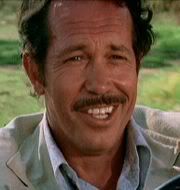Post by Clark Nova on Apr 16, 2007 21:32:57 GMT -5

“But those who toiled knew nothing of the dreams of those who planned. And the minds that planned the Tower of Babel cared nothing for the workers who built it.”
- Maria (Brigitte Helm)
Fritz Lang’s “Metropolis” stands as a definitive achievement of modernism as an art form, using the visual rather than literary medium to put forth its message in a way not previously possible due to previous technological limitations. Using images both spectacular and exaggerated (though an effective exaggeration), “Metropolis’” theme of a separation between working class and higher-ups and the need for a mutual understanding of each is presented both abstractly and directly through the image rather than the word.
Consider, for example, the opening shot of line upon line, file upon file, of workers marching down the hallway towards the elevator that takes them down into the depths of the city’s machines and inner workings. Each worker wears the same uniform, shuffles their feet in the same manner as if they were a military unit, and each slouch and hold their heads down in unison. Also consider a bit later on, when Freder witnesses one of these machines at work, each worker mechanically pushing buttons and pulling levers in uniform, fixed motions. It is as if these workers are themselves machines, as Lang uses the image of uniform, unnatural motion to represent a lack of humanity, hopefully inspiring repulsion in the audience.
Contrast these images of robotic workers with the more picturesque elements of the city, as one sees towering skyscrapers, sky-based cars and blimps, and carefree athletes running in a stadium. Also consider the pleasure garden in which Freder indulges in the most hedonistic of pleasures, providing a stark contrast with the metallic, grimy world of the workers. This fluid and happy-go-lucky world is immediately interrupted by the entrance of Maria and the worker children. Here is the direct conflict and contrast between workers and elites, high and low, heaven and hell. What is most startling about this is how Lang portrays Maria. With the close-up, the lighting, and the focus on her perfectly proportioned face, it is as if she is the very definition of beauty, almost to the point of artificiality. It is no wonder, then, that Freder is stricken at first sight, again portrayed through artificial and exaggerated acting.
This exaggeration practically defines “Metropolis” in many instances. Along with the aforementioned portrayals of Freder and Maria, there is the near-comically evil Rotwang, who inspired just about every mad scientist portrayed in popular culture since then. There is the robotic doppelganger of Maria, complete with her twitchy eye and sexual dance, which is exaggerated to say the least. Such exaggeration is arguably necessary in the case of a silent film in order to make up for the lack of proper dialogue, but it also may add to the raw symbolism of it all, going to every last length to show the divide between worker and elite. There are also the fantastic elements of the imagination that come into play. Such images as workers being fed to a giant monster, masses upon masses of slave labor building the biblical Tower of Babel, and Death itself swinging its scythe indicate the possible fall of this turbulent society in a stark and shocking way not possible through ordinary images or even the written word. They give this story something of a mythic and fantastic property, portraying its message through symbolism rather than realism, exaggeration rather than realism. This use of allegory may sacrifice realism and a direct look at the society that shaped Lang’s views and vision, but they make the film’s point that much clearer and obvious.
10/10


